Digital Poster
fMRI Acquisition
ISMRM & ISMRT Annual Meeting & Exhibition • 10-15 May 2025 • Honolulu, Hawai'i

 |
Computer Number: 65
1437. Concurrent
TMS/EEG/fMRI at 3T using the “RF-EEG Cap”
M. Daneshzand, S. Ardilla, Y. Ma, J. Stockmann, L.
Craven-Brightman, A. Nummenmaa, L. Navarro de Lara
Martinos Center for Biomedical Imaging, MGH, Charlestown, United States
Impact: The “RF-EEG Cap” facilitates precise brain
mapping and real-time monitoring of neuromodulation during
concurrent TMS/EEG/fMRI experiments. Moreover, its
integration with real-time EEG/fMRI acquisition enables
detailed investigation of whole-brain dynamics and supports
closed-loop, patient-specific brain stimulation.
|
|
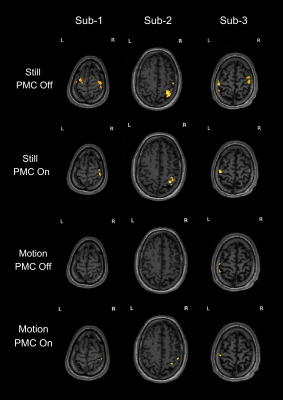 |
Computer Number: 66
1438. Prospective
Motion Correction of Functional MRI Using Markerless Tracking
J. Pereira, J. Slipsager, M. Laustsen, R. Frost, P. Fisher,
T. Gaass
Tracinnovations, Ballerup, Denmark
Impact: While PMC shows potential for improving fMRI
reliability in clinical settings, enhancing brain mapping
despite patient motion, these findings should be approached
cautiously. Further research into real-time motion tracking
integration is essential, especially for patients with
limited motion control.
|
|
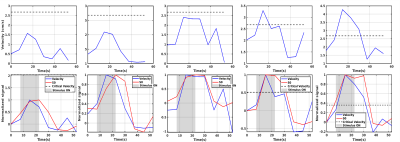 |
Computer Number: 67
1439. Separating
vessel diameter, blood velocity and oxygenation responses to
activation: joint magnitude-phase analysis of phase-contrast
fMRA
D. Varadarajan, Z. Hu, D. Gomez, S. Proulx, P. Wighton, A.
Berman, J. Polimeni
Massachusetts General Hospital, Charlestown, United States
Impact: Several hemodynamic changes occur alongside
neuronal activation, however existing MRI-based methods lack
specificity to individual components. Here we propose a
framework for estimating physiological parameters such as
blood velocity and vessel diameter responses in individual
arteries of human cerebral cortex.
|
|
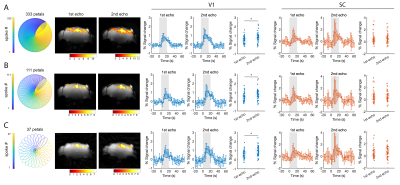 |
Computer Number: 68
1440. PETALUTE
fMRI in the mouse brain
S. Booth, S. Song, T-W W. Wang, T-H H. Chao, S. Sawiak, U.
Emir, Y-y Shih
University of North Carolina at Chapel Hill, Chapel Hill, United States
Impact: We demonstrate robust fMRI contrast using an
ultra short TE sequence with rosette spatial encoding
(PETALUTE).
|
|
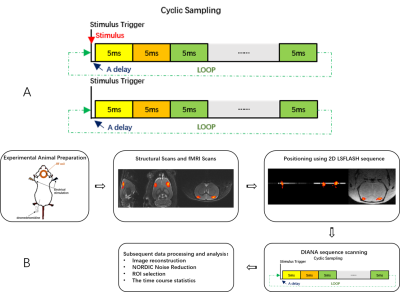 |
Computer Number: 69
1441. The
unbalanced Trigger induced the stable “DIANA” Signal
J. Cao, Z. Yu, Y. Zhuo, Z. Zuo
Institute of Biophysics, Chinese Academy of Sciences, Beijing, China
Impact: This study demonstrated the presence of the
“DIANA” Signal which was observed across the whole brain in
anesthetized rats even without applying stimulations. Future
DIANA-fMRI research should account for and eliminate this
artifact to accurately investigate true neural activity
signals.
|
|
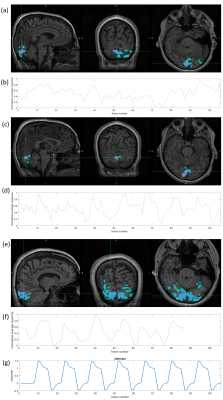 |
Computer Number: 70
1442. UTE/ZTE
Functional MRI with Helical Cone Trajectories
S. Liu, U. Emir, Y-Y I. Shih, N. Yin, M. Bock, A. C. Özen
Division of Medical Physics, Department of Radiology, University Medical Center Freiburg, University of Freiburg, Freiburg, Germany, Freiburg, Germany
Impact: Helical cone trajectories using oscillating
gradients improve sampling efficiencies, allowing for higher
temporal resolution by more aggressive radial undersampling
and accelerated fMRI. This technique holds potential beyond
fMRI and can benefit other dynamic MRI applications.
|
|
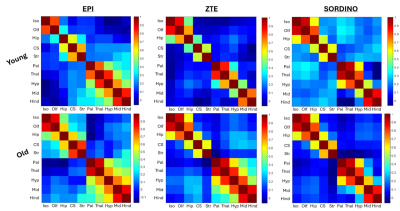 |
Computer Number: 71
1443. Are
all fMRI sequences equal? An investigation into functional
reproducibility in EPI and zero TE sequences for animal fMRI
L. Daley, W. Pan, S. Keilholz
Emory University/Georgia Tech, Atlanta, United States
Impact: Validating an alternative to EPI fMRI offers
researchers greater breadth in the design of their
experiments; the motion insensitivity, acoustic silence and
lack of susceptibility artifacts allows for more complex
imaging systems, such as multi-modal setups and stimulation
paradigms.
|
|
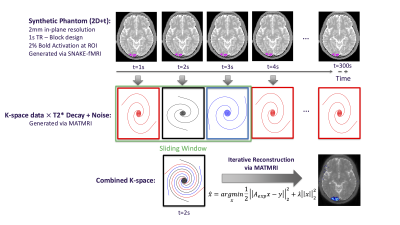 |
Computer Number: 72
1444. Spiral
Keyhole (SpiralK) Imaging: an in silico investigation
F. Ledo, C. Baron, R. Menon
Western University, Robarts Research, Centre for Functional and Metabolic Mapping, London, Canada
Impact: SpiralK shows promise for achieving
submillimetre resolutions with whole-brain coverage while
maintaining appropriate temporal resolution.
|
|
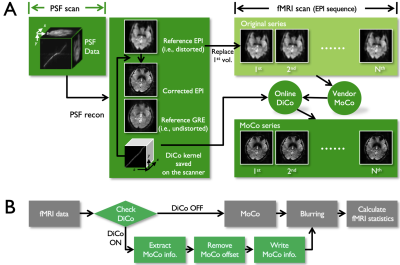 |
Computer Number: 73
1445. Advancing
7T Clinical fMRI: Automated Post-Processing with Prism and
PSF-Based Distortion Correction
M-H In, E. Stinson, W. Neller, M. Hamed, F. Godenschweger,
O. Speck, J. Pillai, K. Welker, A. Fagan
Mayo Clinic, Rochester, United States
Impact: Integrating PSF-based distortion correction with
Prism’s automated workflow significantly improves fMRI data
reliability and alignment at 7T, advancing clinical
applications of ultra-high-field fMRI with minimal user
input and optimized workflow efficiency.
|
|
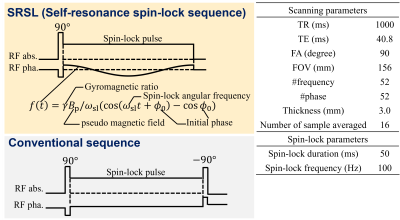 |
Computer Number: 74
1446. Towards
Low-Field fMRI: Detecting Sub-1 nT Magnetic Fields with
Self-Resonance Spin-Lock Sequence
H. Ueda, R. Enari, Y. Ito, Y. Taniguchi
Kyoto University, Kyoto, Japan
Impact: We detected a 0.25 nT magnetic field in the
0.3-T low-field MRI scanner using phantom study,
demonstrating the feasibility of detecting neural magnetic
fields in low-field MRI scanner through the self-resonance
spin-lock sequence.
|
|
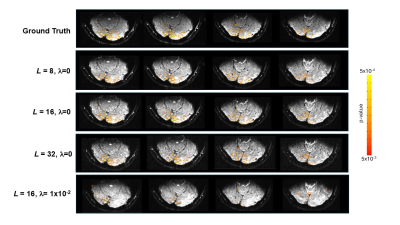 |
Computer Number: 75
1447. Optimizing
Image Reconstruction in fMRI using a Reduced Field-of-View and
(k, t)-Space undersampling
Q. Luo, J. Hutter, X. Zhou
University of Illinois Chicago, Chicago, United States
Impact: The optimal parameters determined in this study
improved the performance of PS-Sparse reconstruction on
image quality, allowing accurate detection of brain
activations in fMRI studies using k-t 3D-rFOVI.
|
|
 |
Computer Number: 76
1448. Brain
Functional Atlas of Resting-State Networks Derived from
Ultra-High Field 7 Tesla MRI
Y. Zhou, P. Lv, J. Parker, J. Cramer, I. Ikuta
Mayo Clinic at Arizona, Phoenix, United States
Impact:
7T MRI functional brain atlas serves as a valuable tool for both basic and clinical neuroscience research, paving the way for groundbreaking discoveries and improved patient care. |
|
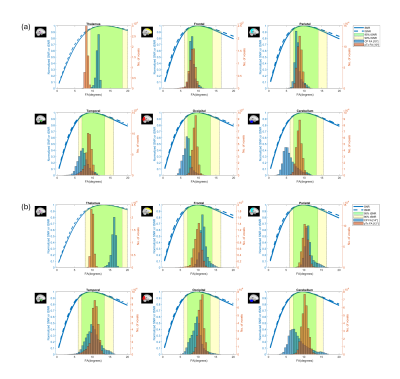 |
Computer Number: 77
1449. Evaluating
the Benefit of Parallel Transmission on tSNR in 3D-EPI-based
fMRI at 7 Tesla
Y. Lu, C-Y Wu, J. Jin, D. Reutens, M. Cloos
Centre for Advanced Imaging, The University of Queensland, Brisbane, Australia
Impact: In the brain, at 7T, the (t)SNR of 3D-EPI is
relatively B1+ robust,
resulting in trivial tSNR benefit with pTx. The benefits
only become impactful when multiple brain regions, including
B1+ starved
areas like the cerebellum, are of interest.
|
|
 |
Computer Number: 78
1450. Multiparametric
functional MRI for the assessment of testicular spermatogenic
function: a preliminary study
J. Guan, S. Ma, G. Tang, W. Yun, X. Wang, J. Peng
The First Affiliated Hospital, Sun Yat-Sen University, Guangzhou, China
Impact: The IVIM-derived f-value shows promising
potential in the assessment of testicular spermatogenic
function. It provides a reference for the anatomy and
pathology of normal testes, and laying the foundation for
future research on the application of IVIM in testicular
lesions.
|
|
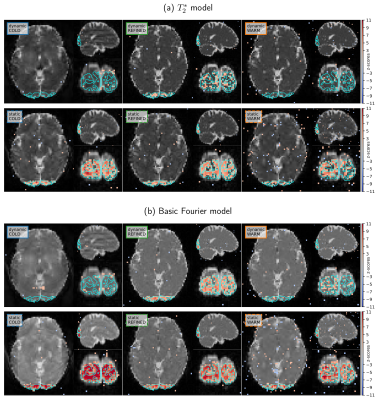 |
Computer Number: 79
1451. SNAKE-fMRI:
Why you should take T2* relaxation into account for simulating
fMRI data
P-A Comby, A. Vignaud, P. Ciuciu
CEA/Neurospin, Paris, France
Impact: This work aims to provide a more realistic and
reproducible framework for simulating fMRI data, leading to
better methodology for the development of new acquisition
and reconstruction strategies.
|
The International Society for Magnetic Resonance in Medicine is accredited by the Accreditation Council for Continuing Medical Education to provide continuing medical education for physicians.